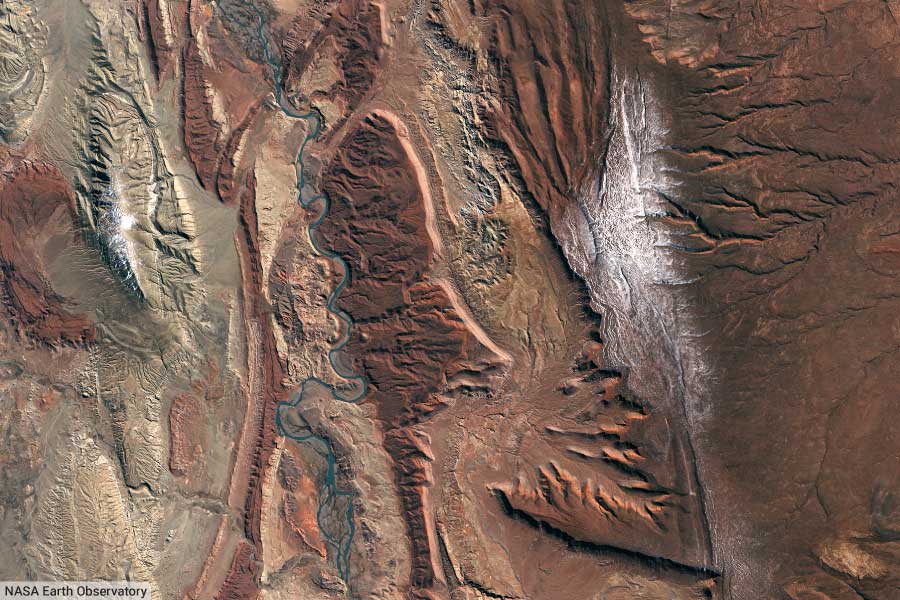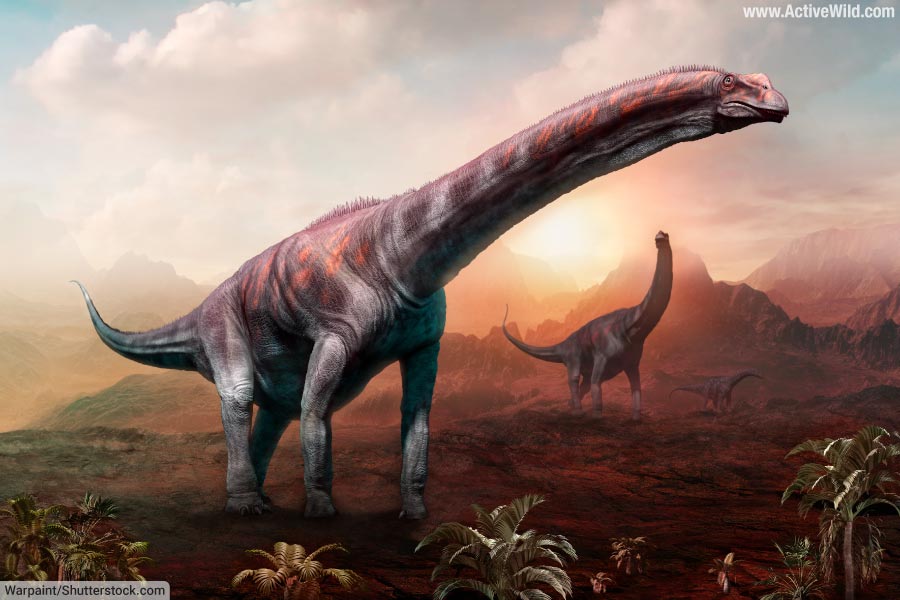A new species of dinosaur, Chucarosaurus diripienda, has been discovered in Argentina.
A giant, even among dinosaurs, the new species belonged to a group known as Titanosaurs, which includes some of the largest dinosaurs ever to have lived.
The fossilized bones of Chucarosaurus diripienda were so big that the van carrying them tipped over while on its way to the laboratory!
(Thankfully, no one was hurt.)
Like other Titanosaurs, Chucarosaurus diripienda was a long-necked, long-tailed, herbivorous dinosaur that walked on four sturdy legs. The new species is estimated to have weighed 50 tonnes, and to have been around 30 meters in length.
You can find out more about dinosaurs on this page: Dinosaur Facts
You can see more dinosaurs on this page: Cool Dinosaurs
Discover other dinosaurs of the Cretaceous Period on this page: Cretaceous Dinosaurs
Discovery Of Chucarosaurus diripienda
Chucarosaurus diripienda was discovered in rocks of Argentina’s Huincul Formation, a geological formation located in the Neuquén Basin, Rio Negro Province, Northwestern Patagonia.

The fossils were first discovered in 2018, and the scientific paper (source) describing the new dinosaur was published by Federico Agnolin of the Museo Argentino de Ciencias Naturales and colleagues in early 2023.
As is the case with many dinosaur discoveries, the fossilized remains of Chucarosaurus diripienda were incomplete; all that remained of the huge dinosaur were a number of limb bones and part of the pelvis.
The specimen was given the reference MPCA PV 820. From this, and another, even less-complete specimen (reference MPCA PV 821), found within 200 m of the first, researchers were able built up a complete picture of Chucarosaurus diripienda.
Chucarosaurus diripienda
Chucarosaurus diripienda belonged to a group of dinosaurs known as Titanosaurs, which itself is part of a larger group known as sauropods.
Sauropod dinosaurs were a group of long-necked, long-tailed, quadrupedal herbivores. Some of the most famous sauropods include Diplodocus, Brachiosaurus, and Argentinosaurus.
You can find out more about the different types of dinosaurs on this page: Types of Dinosaurs
Characterized by their colossal size, small heads relative to their bodies, column-like legs, and teeth adapted for a plant-based diet, sauropods dominated many Jurassic and Cretaceous terrestrial ecosystems.
Chucarosaurus diripienda itself had an estimated weight of 50 tonnes, which is around eight times that of a male African bush elephant. Its length was an estimated 30 meters, the same as that of a blue whale, the world’s largest living animal.
Although huge, Chucarosaurus diripienda wasn't the largest titanosaur; Patagotitan, Argentinosaurus and Puertasaurus are all contenders for that title, each having an estimated length of between 30 and 35 m, and weighing between 50 and 80 tonnes.
The name Chucarosaurus diripienda refers to the accident which saw the van carrying the dinosaur’s remains tip over while en route to the laboratory. “Chucarosaurus” means “hard and indomitable reptile”, while “diripienda” means “scrambled”. (Thankfully, no one was hurt in the accident.)
Titanosaurs

Titanosaurs were a group of sauropod dinosaurs that thrived during the Cretaceous period, known in particular for their remarkable size.
Although found across the globe, Titanosaurs are particularly well-represented in the fossil record of the Southern Hemisphere.
Most titanosaurs were characterized by long necks and tails, with a bulky body supported by four column-like legs. Despite their uniform body plan, the group showed a remarkable diversity in size, ranging from species as small as a pony to some of the largest terrestrial animals that ever lived, such as Argentinosaurus and Patagotitan.
Some titanosaurs, such as Saltasaurus, possessed a form of body armor consisting of small, bony plates known as osteoderms embedded in the skin.
As the last surviving group of long-necked dinosaurs, titanosaurs represent the final burst of sauropod evolution, existing until the end-Cretaceous extinction event approximately 66 million years ago.
The Huincul Formation

The Huincul Formation is a geologic formation located in the Neuquén Basin in Argentina, South America. This formation, which dates back to the Late Cretaceous period, approximately 95 to 100 million years ago, is renowned for its rich fossil record, especially for its diverse dinosaur fauna.
Notable dinosaur species discovered in the Huincul Formation include carnivorous theropods such as Giganotosaurus and Mapusaurus, both among the largest predatory dinosaurs known.
Additionally, the formation has yielded remains of a variety of titanosaurs, including Argentinosaurus, one of the largest dinosaurs ever discovered.
The high concentration of dinosaur fossils at the Huincul Formation has made it a critical site for understanding dinosaur diversity and ecology during the Cretaceous period.
Discover More With Active Wild
You can find out more about dinosaurs on this page: Dinosaur Facts
Discover other dinosaurs of the Cretaceous Period on this page: Cretaceous Dinosaurs


